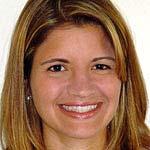How Fitness Professionals Can Fight Childhood Obesity

Fitness professionals are an important part of the solution to the childhood obesity epidemic.
One of the most compelling studies to demonstrate success in combating childhood obesity involved MEND (Mind, Exercise, Nutrition, Do It), an intervention in which fitness professionals who were trained as health coaches delivered a 24-session curriculum to children and families over 3 months in communities and schools. The intervention led to decreases in waist circumference and BMI and improvements in cardiovascular fitness, physical activity levels and self-esteem at the 12-month follow-up (Sacher et al. 2010). This was one of the first studies to demonstrate that a community-based childhood obesity intervention, led by appropriately trained leaders—fitness professionals—could achieve notable successes.
With momentum continuing to build, now is the time for fitness professionals—the country’s physical activity experts in communities across the U.S.—to collectively take action and join the campaign to reverse childhood obesity. More than 200,000 fitness professionals are living and working in cities and towns throughout the 50 states; there is no larger group of committed experts to help translate recommendations into action.
Fitness professionals have many opportunities to engage in promoting physical activity for youth. Earlier this year the American Council on Exercise released a position statement on this topic. It issued a call to action to fitness professionals to engage in efforts to increase physical activity in several ways:
Promote active transportation to and from school. Two models are walk-to-school programs and biking groups. For more information, check out Walk to School and Bike to School (www.walkbiketoschool.org).
Increase activity during the school day. This can be accomplished by scheduling short activity breaks daily and by promoting active recess. Examples of successful programs include the JAM (Just-a-Minute) School Program (www.healthetips.com/jam-program.php) and Playworks® (www.playworks.org).
Integrate physical activity into the school curriculum. Examples of programs that have implemented physical activity into the curriculum include the CHALK/Just Move activity break program (www.activeschoolsasap.org/node/175), ACE’s Operation FitKids™ (www.acefitness.org/acefit/operation-fit-kids/) and the most established and well-researched program—CATCH® (Coordinated Approach to Child Health) (www.catchusa.org).
Increase the availability of physical education in schools, and enhance the physical education curriculum to maximize active time for all students. SPARK™ is a long-standing model for integrated physical activity/nutrition programs in elementary schools (www.sparkpe.org).
Enhance before- and after-school programs to provide more time spent in direct physical activity. Programs such as the BOKS (Build Our Kids Success) before-school activity program (www.bokskids.org)and a variety of after-school programs—including Girls on the Run (www.girlsontherun.org), for girls in third to eighth grades—aim to increase the minutes of physical activity in a child’s day.
To read the full article published in the 2013 July-August issue of the IDEA Fitness Journal click here.
Natalie Digate Muth, MD, MPH, RD
"Natalie Digate Muth, MD, MPH, RDN, FAAP, is a board-certified pediatrician and obesity medicine physician, registered dietitian and health coach. She practices general pediatrics with a focus on healthy family routines, nutrition, physical activity and behavior change in North County, San Diego. She also serves as the senior advisor for healthcare solutions at the American Council on Exercise. Natalie is the author of five books and is committed to helping every child and family thrive. She is a strong advocate for systems and communities that support prevention and wellness across the lifespan, beginning at 9 months of age."






